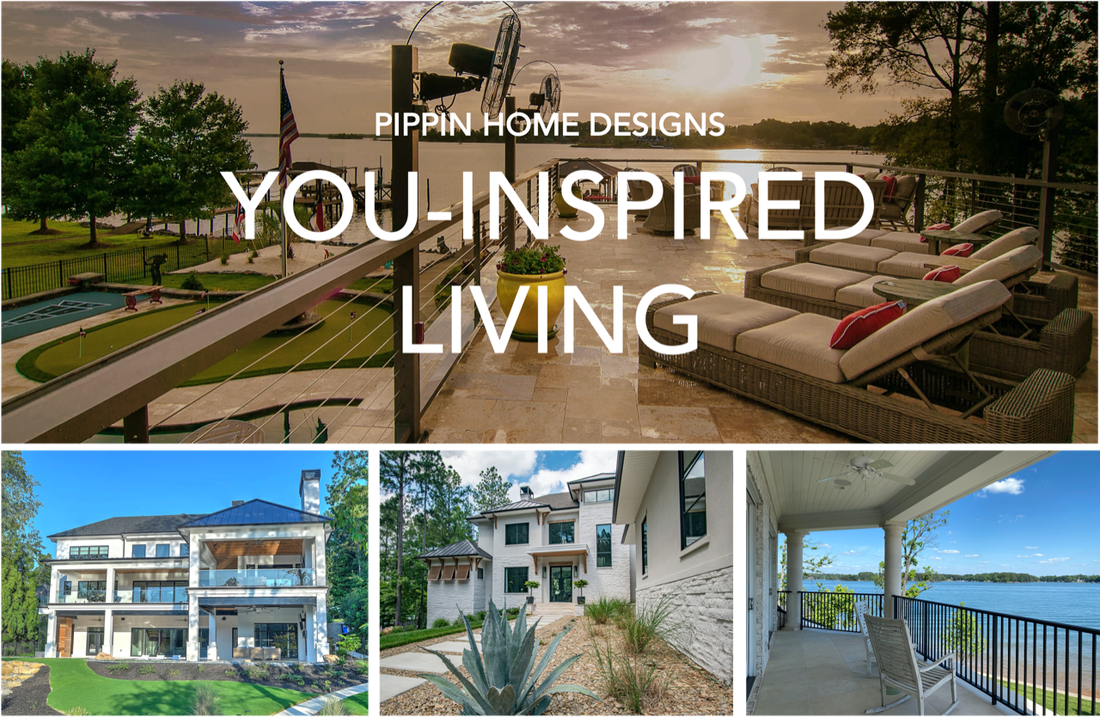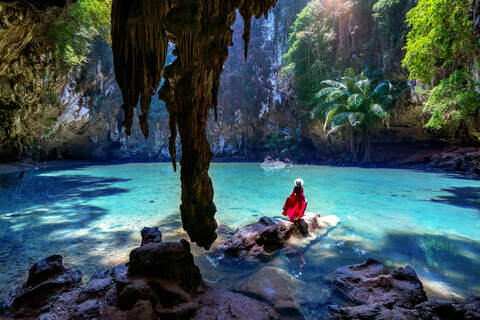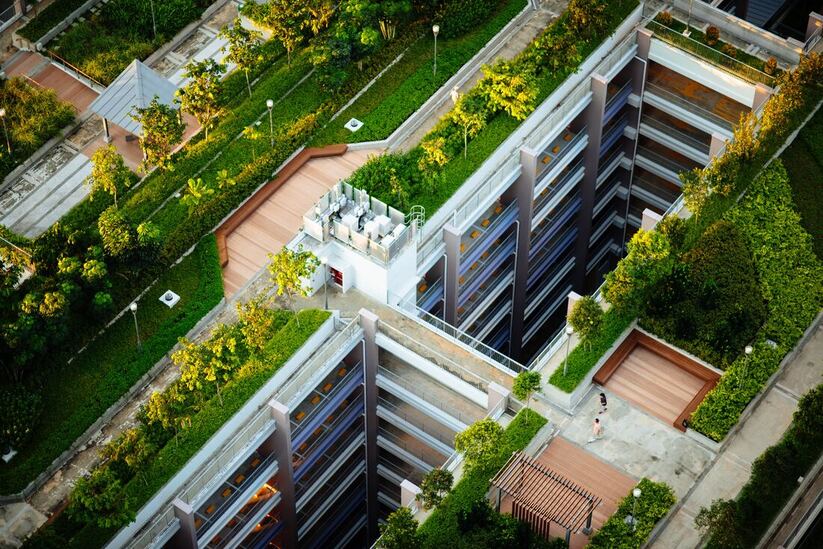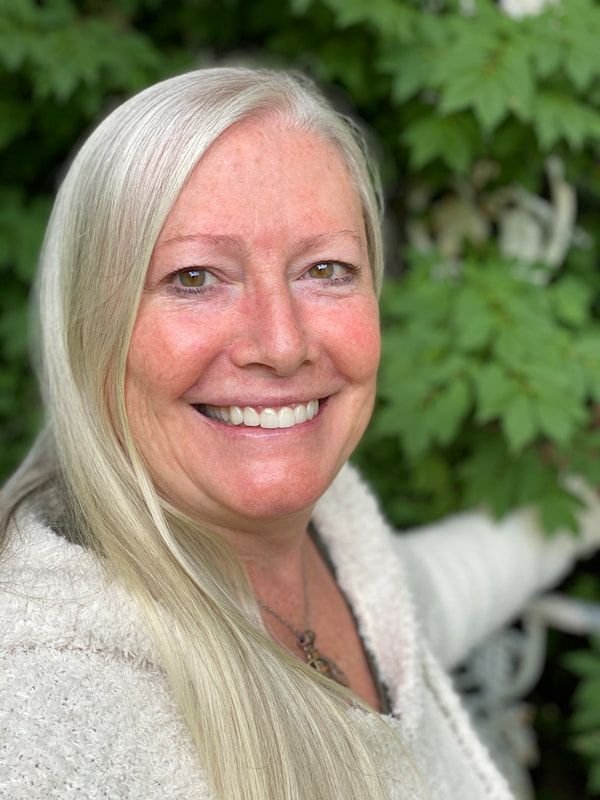
 Mother Nature inspires us with her brilliance on multiple levels. At the surface level, her beautiful forms leave us awestruck. To a deeper degree, the behavior of her organisms adds another dimension of amazement. From an expanded view, the interaction of all species in an ecosystem begins to look like a living, breathing, evolving tapestry woven together with the systems developed over millennia. In this fourth post of the Regenerative Design Series, Jenny expands on the concepts introduced in the last post, Biomimcry: Blueprints from our Biological Elders. She defines the three levels of biomimicry with examples of each. The Levels as Described by Mother Nature’s Apprentice In a private meeting with one of Mother Nature’s most admiring apprentices, Maria O’Farrell of Biomimicry 3.8, we discussed at length the three primary levels of biomimicry and how each one provides a template for inspired design…the design of the future! Biomimetic design assures a vibrant, robust, and stunningly gorgeous future for all inhabitants of Earth to enjoy! Maria explained that biomimetic design emulates nature on at least one of these levels however, designers are encouraged to design the way nature has learned to design, by utilizing all three levels. She points out that “nature creates conditions conducive to life,” a statement that Janine Benyus, the woman who coined the term biomimicry, uses to remind us of the ultimate goal of biomimetic design. The three levels of biomimicry that help us achieve this goal are defined as follows, Level I: Organism/Form Level II: Behavior/Process Level III: Ecosystem/System Level I – Organism/Form Level one is what we see on the surface and is the more traditional and most easily recognized form of biomimicry. Level one mimics specific organisms and is used to design structures, products, and materials to look like a part of, or the whole of, an organism. Level one asks the question, “How does nature create the shapes that help organisms thrive?” The answers provide solutions that require an alternative to the standard geometry typically used in design. The geomorphic shapes and forms of organisms provide blueprints that can be mimicked to overcome many design challenges. Level I Biomimicry Example: Dragonfly Wing Inspired Antibacterial Surfaces. A microscopic examination of the dragonfly wing determined that it was void of bacteria due to tiny needle-like structures just 240 nanometers tall. These nano-spikes puncture bacteria cell walls, mechanically killing bacteria on contact. The implications of mimicking this biological form could lead to bacteria-free surfaces in your home, thereby enhancing your health and the health of loved ones while eliminating the need for toxic antimicrobial chemicals that are also toxic to you and only lead to antibacterial resistance. Dr. Yugen Zhang and his team have already designed an antibacterial and non-toxic nanocoating that mimics the dragonfly wing. This nanocoating was tested on glass, ceramic, and titanium and killed up to 99.9% of bacteria found on the surfaces. This level one biomimicked material is also environmentally friendly since it kills bacteria mechanically as opposed to chemically. Level II – Behavior/Process As we zoom in closer, paying attention to how organisms achieved their evolutionary adaptations, we begin to see the behaviors and processes that have contributed to their survival and advancement. Level two biomimicry asks the question, “How does the behavior of nature help organisms thrive?” The answers teach us how organisms create the materials they use to build the structures they call home. Level II Biomimicry Example: Termite Mound Inspired Self-Cooling Buildings A common design dilemma involves the challenges of heating and cooling a home. Traditionally constructed buildings in hot climates require expensive insulation and tremendous amounts of energy to air-condition spaces to a comfortable indoor temperature. Much can be learned from the termite who has learned how to air-condition the nest below ground using internal air currents driven by the solar heat of the above ground mound. Using a combination of chimney structures, vent holes, a complex array of tunnels, and/or porous walls, the termite mound functions much like mammalian lungs, inhaling and exhaling as temperatures rise and fall throughout the day. Architect Mick Pearce used the blueprint from termite mounds to design a natural cooling system for one of the largest commercial buildings in Zimbabwe, the Eastgate Center (as seen above). At night, cool air is pulled in from outside and is dispersed throughout the seven floors. Concrete blocks absorb the cold, keeping the building insulated and chilling the circulating air. As temperatures rise during the day, the warm air is ventilated up and released through chimneys. The termite mound-mimicked cooling system of the Eastgate Center maintains a comfortable 82 degrees during the day and 57 degrees at night while using 35% less energy than similar buildings in Zimbabwe. Level III – Ecosystem/Systems Expanding our view of Mother Nature reveals her intricate web of life. Connections that are only able to be seen when considering the entire ecosystem and the way each and every species relates to one another. As Maria O’Farrell points out, nothing is mutually exclusive in nature. Everything is interrelated and the relationship between climate, water, soil, microbiome, flora, fauna, etc. is designed to enhance the success of all species. Level three asks the question, “How does nature create systems that help all organisms thrive?” The answers teach us how to include ourselves in this dynamic web of life. Level III Biomimicry Example: Blue Green Roofs Blue green roofs involve the design of an entire ecosystem on the roof of your home, garage, or other structure. They are one of the most efficient means of managing storm water while enhancing biodiversity. Blue green roofs are a combination of green roof technology with an extra water retention layer beneath the green layer. This extra layer captures and stores water during large rain events and is used to water the plants through capillary action of the green layer during a drought or when irrigation is otherwise difficult. Blue green roofs have a high evapotranspiration rate (70% compared to the 30% of green roofs alone) which causes evaporative cooling. This reduces heat stress on the roof while actually cooling the urban environment. These biomimicked roofs are particularly useful in cities where localized temperatures can soar creating urban heat islands because of non-permeable materials such as large buildings, concrete, and asphalt covering much of the ground. This man-made ground cover also causes stormwater to rush into sewers before capture and reuse is possible. We can choose to consciously participate in nature’s web of life by designing blue green roofs in urban areas that offset the disturbed ground surface area that otherwise, under natural conditions, would slowly filter water, mitigate erosion, provide wildlife habitat, attract pollinators, transpire water back into the air, and improve air quality. The recognition of benefits of this particular level III biomimicked design has propelled technology to advance in the arena of blue green roofs, becoming more affordable and obtainable. Click HERE to shop Living Roofs based out of Asheville and click HERE for a list of recommended plants to be used on living roofs in North Carolina. How Well Have You Learned the 3 Levels of Biomimicry? Take a fun and interactive quiz from eCampus Ontario to see how well you’ve learned the three levels of biomimicry. Share your results in the comments section of this blog. Reuniting Built Home with Natural Home Humans have become divorced from nature, seeking to conquer as opposed to connect. Our failure to acknowledge our relationship with nature means we also fail to notice the benefits ecosystems are providing for us free of charge every day. There’s no reason why we cannot include ourselves in the web of life. Our homes interact with nature whether we acknowledge it or not. Let’s open the dialog with Mother Nature and ask her what she can instead teach us. You can begin by visiting AskNature.org to search for biomimetic design solutions offered by different species. Let’s design our homes to tread lightly on the ground, removing as few species as possible during construction, and allowing the brilliance of nature to provide the ecosystem services that can greatly enhance homeownership. One major benefit is the increase in property value due to the beauty and joy this type of environment brings. Join us next month when we explain how to maximize the benefits of an intact ecosystem on your property. I intend you level up your relationship with Mother Nature and begin to integrate her lessons into your home. Inspired by you, Jenny Pippin, CPBD, FAIBD, CGP
Pippin Home Designs
0 Comments
Leave a Reply. |
AuthorI am Jenny Pippin, founder of Pippin Home Designs and creator of my own inspired living. I grew up as an ordinary southern girl, working in the fields of my family’s tobacco farm. It didn’t take me long to realize I had greater gifts and so I chose to step into my power and create my own path in life, inspired by my heart’s true passion. (More on my personal story HERE!) Archives
February 2024
Categories
All
|
Copyright 2020. Pippin Home Designs. All rights reserved.
ARCHITECTURAL DESIGN COPYRIGHT NOTICE
1987-2024 Copyright. Jennifer B. Pippin FAIBD, CPBD. Pertaining to all home designs, drawings, and photographic imagery of completed designs
presented herein. No part of the contents of the design work presented on this website may be reproduced or transmitted in any form or
by any means, electronic or mechanical, for the purpose of replication or adaptation. This material is intended to provide accurate and
authoritative information about the design abilities and expertise of Jennifer B. Pippin FAIBD, CPBD and Pippin Home Designs.
ARCHITECTURAL DESIGN COPYRIGHT NOTICE
1987-2024 Copyright. Jennifer B. Pippin FAIBD, CPBD. Pertaining to all home designs, drawings, and photographic imagery of completed designs
presented herein. No part of the contents of the design work presented on this website may be reproduced or transmitted in any form or
by any means, electronic or mechanical, for the purpose of replication or adaptation. This material is intended to provide accurate and
authoritative information about the design abilities and expertise of Jennifer B. Pippin FAIBD, CPBD and Pippin Home Designs.








 RSS Feed
RSS Feed
